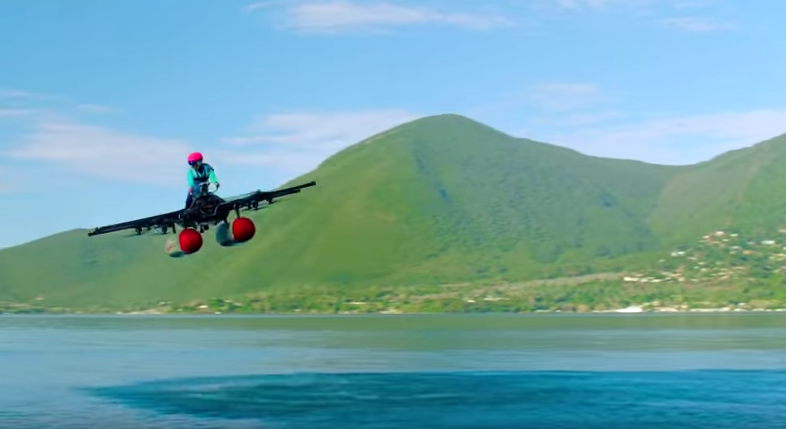
A newly released video shows a prototype of a flying car, which resembles an airborne motorcycle, zooming over open water.
The prototype can take off vertically, runs solely on electric power and could fit in the average person's garage, said Kitty Hawk, the company that built the prototype flying machine.
The company was funded by Google co-founder Larry Page. The working prototype took to the skies earlier this month, but customers won't be able to get their own until the end of this year, Kitty Hawk said. The flying car is currently regulated as an ultralight aircraft under Part 103 of the Federal Aviation Administration's regulations for these types of vehicles, according to Kitty Hawk. [Humanoid Robots to Flying Cars: 10 Coolest DARPA Projects]
The flying car isn't designed to replace your Toyota Camry on the morning commute, the company said. Rather, the car is intended to fly over a body of freshwater, and is suited for flight only in uncongested areas, the company said. However, the barrier to entry for the car is low, because people aren't required to have a pilot's license to operate the vehicle, Kitty Hawk said. As a result, the new flying car is more akin to a hobbyist's jet ski than a truly new mode of transportation, the company said.
For $100, people can purchase a "flyer discovery membership" with Kitty Hawk. This gives them three years of access to what is essentially a flying-car-enthusiasts club, a jump on, as well as a $2,000 discount on the retail price when the car does become available. (The company hasn't listed a retail price yet.)
The flying car that Kitty Hawk plans to sell will look different from the one showcased in the group's recent video, the company said.
Originally published on Live Science.
Get the world’s most fascinating discoveries delivered straight to your inbox.

Tia is the editor-in-chief (premium) and was formerly managing editor and senior writer for Live Science. Her work has appeared in Scientific American, Wired.com, Science News and other outlets. She holds a master's degree in bioengineering from the University of Washington, a graduate certificate in science writing from UC Santa Cruz and a bachelor's degree in mechanical engineering from the University of Texas at Austin. Tia was part of a team at the Milwaukee Journal Sentinel that published the Empty Cradles series on preterm births, which won multiple awards, including the 2012 Casey Medal for Meritorious Journalism.



